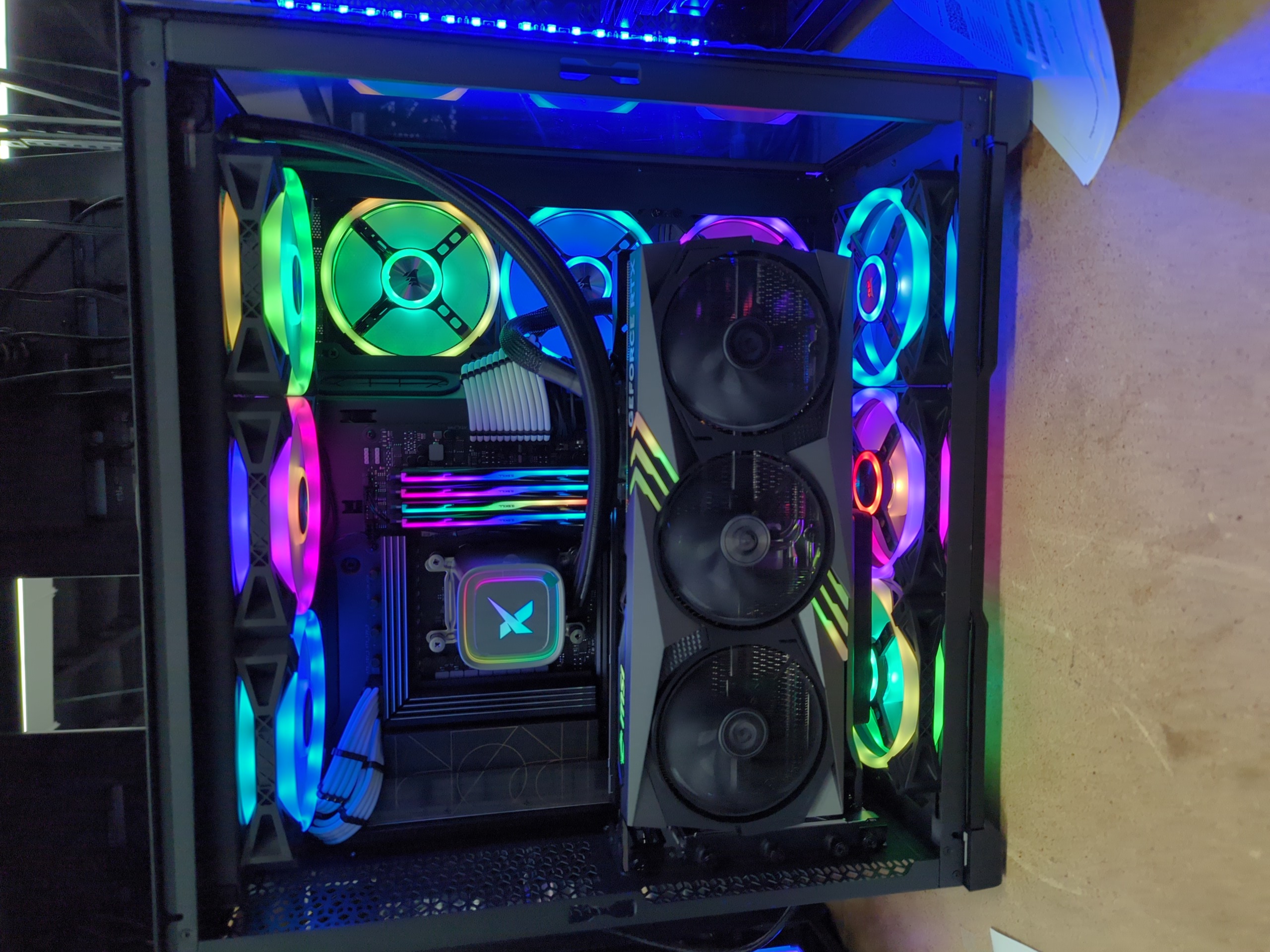For whatever it's worth here's my newest editing pc and monitor. I've had it abouit 10 months and it's as killer as it sounds. The M.2 cards are actually one WD Black 850 2 TB and one 4TB and 2 of the Samsung 990 Pros 2 TB. The 990s are faster by far at random data handling and make a difference when you throw a lot of data at LRC to manipulate.
The M.2 drives runs at around 7500 mbs and the mobo has 2 PCIE GEN 4 and 2 GEN 5 M.2 slots. Currently the available Gen 5 drives are running at 10,000 MB/s but when the factories gear up for it true GEN 5 will run at over 15,000. There are no PCIE Gen 5 GPUs out there yet but they are coming.
Monitor Specs:
https://www.asus.com/displays-desktops/monitors/proart/proart-display-oled-pa32dc/
The PC says X-6 but I told Xidax what components I wanted and they built it to spec for me.
When I install a Gen 5 GPU I'll also get rid of the liquid CPU cooler and install a Noctua air cooler. Just as an FYI, I've had to replace every liquid cooler in the last 4 PCs and have learned that air cooled runs cooler and because the liquid cooling radiators block air from escaping the case even when not clogged by dirt. Over time the radiators and fan shrouds begin to act as a filter and become restricted. These guys do run hot especially with 4 M.2s and a honking big GPU blocking air flow.
I left the build picture PDF to show that horrible vertical GPU mount. Don't do it. It sits right on the bottom fans and reduces airflow in the case alot. When I put in a GEN 5 GPU is will be mounted horizontally.
Xidax warranties what they built for life.
Happy shopping.
Xidax X-6
$5,984.90
- (1x) Leviathan X Black EOL
- (1x) AMD RYZEN 9 7950X3D 16C/32T 5.7GHZ
- (1x) Xidax Ultra RGB 360mm AIO
- (1x) ASUS PROART X670E-CREATOR WIFI
- (1x) XIDAX APPROVED 80PLUS GOLD ATX3.0/PCIE 5.0 1300W POWER SUPPLY
- (1x) G.SKILL TRIDENT Z5 RGB AMD EXPO DDR5 6000MHZ 32GB: 128GB (32x4)
- (1x) GeForce RTX® 4090 GAMING X TRIO 24G
- (1x) Xidax Ultra Sleeving: White
- (9x) Corsair QL120 Series RGB Fans
- (1x) WINDOWS 11 RECOVERY FLASH DRIVE
- (1x) Xidax Gaming Shield -Virus & Malware Protection
- (1x) Windows 11: Pro
- (2x) WD_BLACK SN850X M.2: 2 TB



